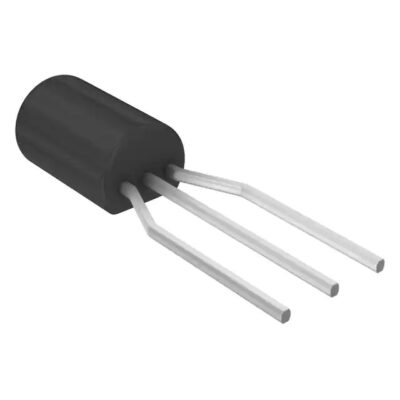2SA1015-Y
Part Number: 2SA1015-Y
Manufacturer: Micro Commercial Co.
Description: TRANS PNP 50V 0.15A TO92
Shipped from: Shenzhen/HK Warehouse
Stock Available: Check with us
ICRFQ.com - Electronic Components Distributor in China Since 2003

Part Number: 2SA1015-Y
Manufacturer: Micro Commercial Co.
Description: TRANS PNP 50V 0.15A TO92
Shipped from: Shenzhen/HK Warehouse
Stock Available: Check with us
The 2SA1015-Y is a well-known low-frequency PNP transistor that is known for its ability to boost signals in general. It has three important terminals: the emitter, the base, and the collection. This transistor is made to boost information in a lot of different ways.
The 2SA1015-Y is made up of layers of different kinds of semiconductor materials. The N layer stands for the base side, while the P layer stands for the emitter and the collection. The flow of current and how these layers engage with each other are very important to the process of amplification.
Because of how it works and what it can do, the 2SA1015-Y transistor is often used to boost low-frequency signals in radio systems, small-signal amplification circuits, and other places where this is needed. It is a popular choice among both electronics fans and workers because it can do a lot of different things and works well.
Key Features and Specifications of the 2SA1015-Y Transistor
The 2SA1015-Y transistor has a number of important features and specs that make it a good choice for general-purpose amplification. Here are the things that stand out:
The 2SA1015-Y transistor is good for general-purpose amplification needs because it can work at low frequencies, has modest current and voltage ratings, high gain values, high linearity, and low noise. It is often used for amplification in many different industries because it works well and can be used in many different ways.
The 2SA1015-Y transistor is a three-layered semiconductor device that uses PNP (positive-negative-positive) transistor technology. Let’s look at how it’s put together and how it works:
When an input signal is sent to the base terminal, it changes the small base current. This makes the current from the collector to the emitter bigger and stronger. The ability of the transistor to control the flow of most charge carriers through the base area is what makes this amplification possible.
By setting up the transistor correctly and sending the input signal to the base terminal, the 2SA1015-Y transistor can amplify the input signal and send a bigger current or voltage to the external circuit.
In short, the N-type base, P-type emitter, and P-type collector areas of the 2SA1015-Y transistor make it possible to control and boost signals. By letting current pass through the emitter, base, and collector terminals, the transistor can boost small signals. This makes it a useful component for general-purpose amplification.
The emitter, the base, and the collector are the three main ends of the 2SA1015-Y transistor. The base controls how the transistor acts because the emitter sends holes (charge carriers) into it. The result is the holes in the base, which the collector then collects.
In a common-emitter amplifier, the emitter is connected to ground or a reference voltage, the base is connected to a coupling capacitor that sends the input signal to the base, and the collector is connected to the load resistor. For best performance, the exact circuit design and component numbers can be changed. Stable function requires careful thought about the design and the values of the parts.
In the end, the 2SA1015-Y transistor is a flexible and important part of general-purpose amplification circuits. It is very useful because it works well at low frequencies, especially in radio amplification. The 2SA1015-Y is useful in many different amplifier circuits because it has moderate gain values, high current and voltage ratings, and good linearity. Its pin arrangement and end functions are clear, which makes it easy to make connections in amplifier designs.
The 2SA1015-Y transistor has a lot of promise for amplification needs in many electronic applications if it becomes widely used. We recommend that you talk to our experts at ICRFQ to learn more about what it can do and get personalised help. Use the 2SA1015-Y transistor to its fullest extent and find out what it can do for your amplification projects.
WhatsApp us